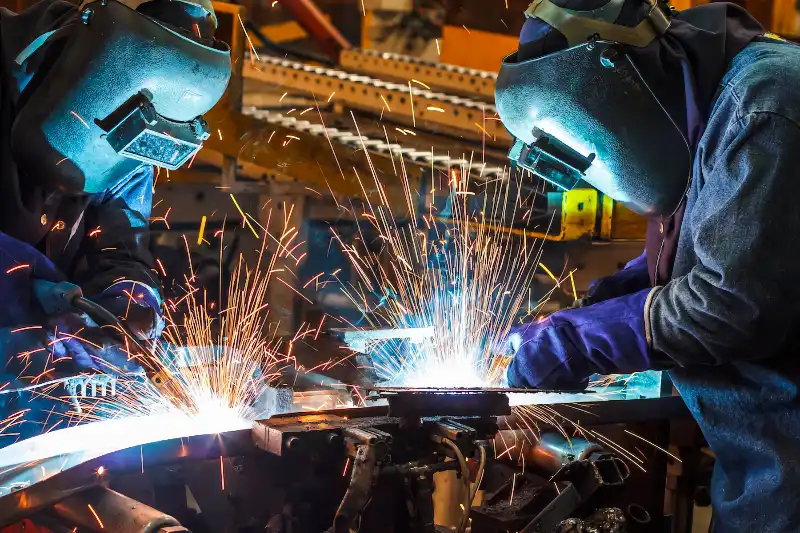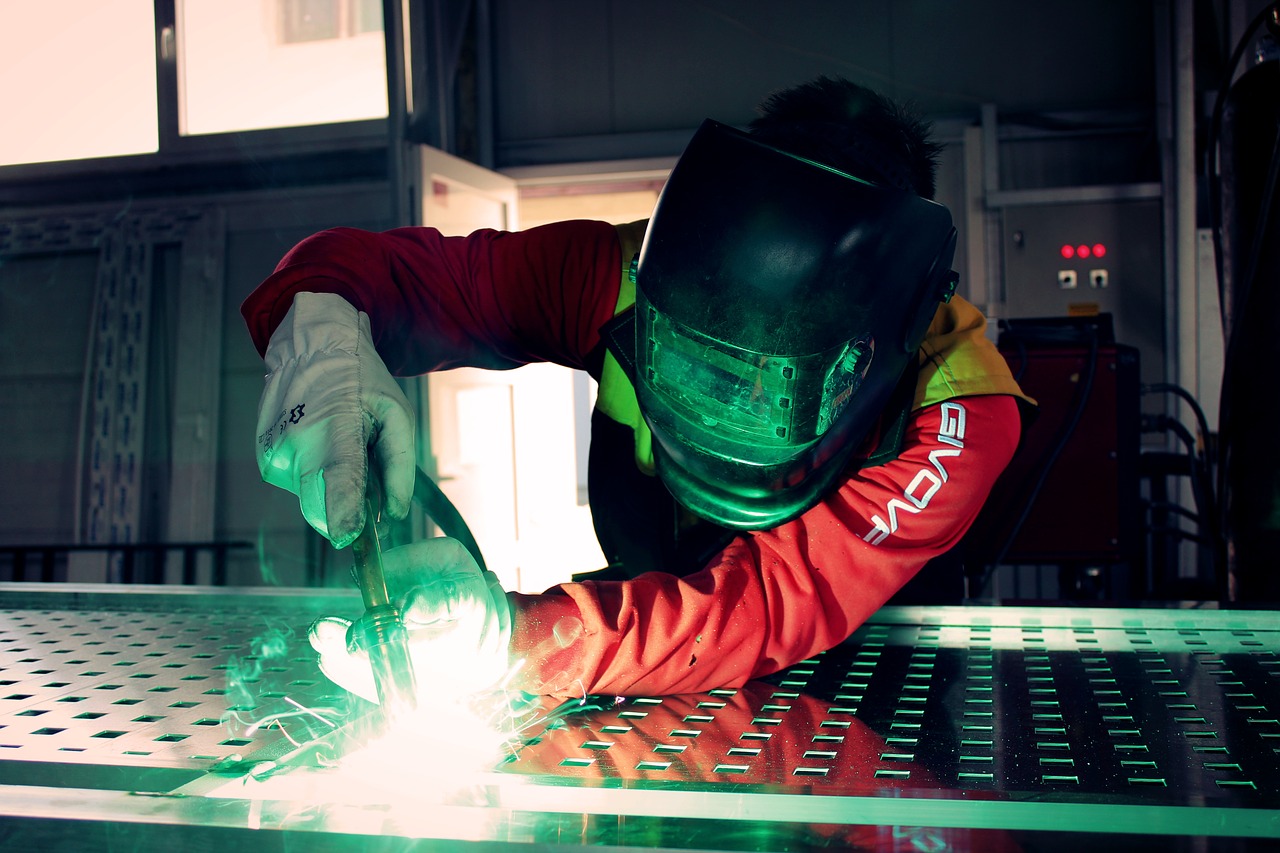Usual Welding Repair Work Issues and How to Address Them Properly
Welding repair services often run into a variety of problems that can jeopardize the honesty of the end product. Common problems include poor penetration, porosity, and imbalance, amongst others. Each flaw presents one-of-a-kind obstacles that require details approaches for resolution. Understanding these issues is vital for welders aiming to improve their results and skills. This discussion will explore these typical welding repair service problems and efficient approaches to address them.
Inadequate Infiltration
Insufficient penetration takes place when the weld steel falls short to completely fuse with the base product, leading to weak joints and potential architectural failures. This problem commonly originates from not enough heat input, inaccurate electrode angle, or inappropriate welding rate. Welders may encounter poor infiltration as a result of a mistake of the needed parameters for a specific material density or kind. In addition, contamination on the base product's surface can hinder efficient bonding, worsening the issue. To address inadequate infiltration, welders need to ensure proper setups on their devices and preserve a tidy work surface area. Normal assessment of welds is recommended to determine any kind of shortages early, permitting for prompt modifications and the avoidance of jeopardized architectural integrity in bonded assemblies.
Porosity
Porosity is a common issue in welded joints that materializes as little gas bubbles entraped within the weld steel. This flaw can jeopardize the honesty of the weld, leading to minimized toughness and possible failure under anxiety. Welding. Porosity typically emerges from contamination, wetness, or improper welding strategies, which allow gases to leave right into the liquified weld pool. To resolve porosity, welders ought to ensure proper surface area preparation, maintain a clean working setting, and utilize ideal welding criteria. Additionally, choosing the ideal filler product and shielding gas can mitigate gas entrapment. Normal inspection and screening of welds can aid identify porosity early, assuring prompt corrective activities are taken, thereby maintaining the high quality and integrity of the welded structure
Imbalance
Imbalance in welding can arise from various elements, consisting of incorrect setup and thermal growth. Recognizing the origin is vital for effective resolution. A number of modification techniques are readily available to realign components and assure structural integrity.
Reasons of Misalignment
Welding imbalance typically originates from a selection of underlying issues that can compromise structural integrity. One primary reason is improper fit-up of parts prior to welding, which can result in voids and unequal surface areas. Variants in thermal growth during the welding procedure can also cause distortion, specifically if the materials being joined have various coefficients of growth. In addition, insufficient fixturing and securing may fall short to hold elements firmly in position, leading to motion during welding. Improperly conserved equipment, consisting of welding machines and tools, might present variances in the weld bead, more adding to misalignment. Lastly, operator error, originating from insufficient training or experience, can additionally play a significant function in producing misaligned welds.
Correction Strategies Available
Resolving misalignment successfully calls for a mix of restorative methods customized to the particular concerns available. One typical approach is the use of jigs or components to hold components in the correct position throughout welding, ensuring constant positioning. Furthermore, pre-heating the materials can help reduce distortion and enhance fit-up. For substantial misalignment, mechanical adjustment methods, such as making use of hydraulic jacks or clamps, can be employed to remedy the placement prior to welding. Post-weld warm treatment might also be essential to ease anxieties triggered by misalignment. Mindful examination and adjustment throughout the setup phase can avoid imbalance problems from ending up being substantial troubles, promoting a smoother welding process and enhancing general structural stability.
Distortion
Distortion is a typical obstacle in welding that can emerge from numerous elements, including irregular heating and air conditioning. Recognizing the reasons of distortion is essential for applying reliable avoidance methods. Resolving this problem not just enhances structural integrity yet additionally boosts the total quality of the weld.
Reasons for Distortion
When based on the intense heat of welding, products commonly undertake modifications that can bring about distortion. This sensation largely develops from thermal growth and contraction throughout the welding process. As the weld location warms up, the material expands; upon cooling, it gets, which can produce inner stresses. On top of that, uneven heating throughout a workpiece can worsen these anxieties, causing warping or flexing. The kind of material additionally plays a click site considerable duty; steels with differing thermal conductivity and coefficients of development might respond in a different way, leading to unpredictable distortions. Poor joint style and inadequate fixturing can contribute to imbalance during welding, enhancing the chance of distortion. Comprehending these reasons is vital for reliable welding fixing and prevention methods.
Avoidance Techniques
Reliable this contact form prevention techniques for distortion throughout welding emphasis on managing heat input and ensuring correct joint style. Preserving a constant warmth input assists to lessen thermal expansion and contraction, which can result in distortion. Using techniques such as preheating the work surface can likewise lower the temperature level slope, advertising uniform heating. In addition, picking ideal joint designs, such as T-joints or lap joints, can improve security and decrease anxiety focus. Executing proper fixturing to protect the workpieces in position additionally aids in preserving positioning throughout the welding procedure. Staggered welding sequences can disperse heat a lot more evenly, protecting against localized distortion. By applying these methods, welders can considerably decrease the probability of distortion and improve the overall top quality of their welds.
Breaking
Breaking is a typical problem encountered in welding repair work, usually resulting from various factors such as improper cooling rates, product selection, or inadequate joint preparation. The event of cracks can greatly compromise the stability of the weld, causing possible failures during procedure. To address this concern, welders must initially examine the source, ensuring that materials are compatible and appropriately selected for the particular application. Furthermore, regulating the air conditioning mig welding stainless steel price throughout the welding procedure is necessary; quick cooling can cause stress and anxiety and bring about fracturing. Appropriate joint design and preparation also add to lessening the threat. Applying these strategies can boost weld high quality and toughness, eventually lowering the chance of fracturing in finished weldments.

Incomplete Fusion
A significant issue in welding fixings is incomplete fusion, which happens when the weld metal does not sufficiently bond with the base product or previous weld passes - Belgrade Fabrication. This issue can result in weak points in the joint, potentially jeopardizing the integrity of the bonded structure. Factors contributing to incomplete fusion include insufficient warmth input, improper welding strategy, and contamination of the surface areas being signed up with. To resolve this issue effectively, welders need to ensure appropriate pre-weld cleansing and surface prep work, along with change their welding criteria to achieve ample infiltration and combination. Normal inspection throughout the welding process can also help recognize insufficient blend early, permitting timely restorative steps to enhance the general top quality of the weld
Overheating
While welding repair services can improve structural stability, overheating presents a considerable difficulty that can bring about product degradation. Too much warmth throughout welding can alter the mechanical residential properties of steels, causing decreased stamina, raised brittleness, and bending. This sensation is particularly critical in high-stress applications where structural reliability is extremely important. Identifying getting too hot can entail aesthetic examinations for staining or distortion, along with monitoring temperature during the welding procedure. To alleviate the dangers connected with getting too hot, welders need to utilize ideal strategies, such as managing warm input, adjusting traveling speed, and making use of ideal filler products. Furthermore, carrying out pre- and post-weld heat therapies can assist bring back material residential or commercial properties and boost the general top quality of the fixing, ensuring long-term efficiency and safety.
Regularly Asked Questions
What Are the Common Indications of a Welding Flaw?

How Can I Check My Welds for Quality?
To examine welds for high quality, one can make use of aesthetic inspections, ultrasonic testing, and radiographic methods. Each technique ensures architectural honesty, determines problems, and confirms adherence to defined criteria, inevitably boosting the dependability of the bonded joints.
What Safety and security Precautions Should I Take While Welding?
When welding, one must prioritize safety by wearing appropriate personal safety devices, guaranteeing correct ventilation, safeguarding combustible products away, preserving a clean office, and being mindful of environments to protect against crashes and injuries.
Can I Repair a Weld Without Redoing the Entire Joint?
Fixing a weld without redoing the whole joint is possible, relying on the damage (Montana Mobile Welding and Repair Belgrade). Techniques such as grinding, adding filler product, or making use of a welding procedure can successfully attend to details flaws while preserving the bordering structure
What Devices Are Crucial for Effective Welding Services?
Important tools for effective welding repair work include a welding equipment, cable brush, mill, protective equipment, clamps, and filler materials. Each tool plays a vital function in making certain quality and safety and security throughout the repair service process. Porosity typically develops from contamination, wetness, or inappropriate welding strategies, which permit gases to leave into the liquified weld swimming pool. Inadequately maintained devices, including welding devices and devices, might introduce variances in the weld grain, more contributing to imbalance. When subjected to the intense heat of welding, products often go through adjustments that can lead to distortion. Breaking is a typical problem experienced in welding fixings, often resulting from various factors such as improper cooling rates, product choice, or insufficient joint preparation. A substantial problem in welding fixings is incomplete blend, which occurs when the weld steel does not effectively bond with the base material or previous weld passes.